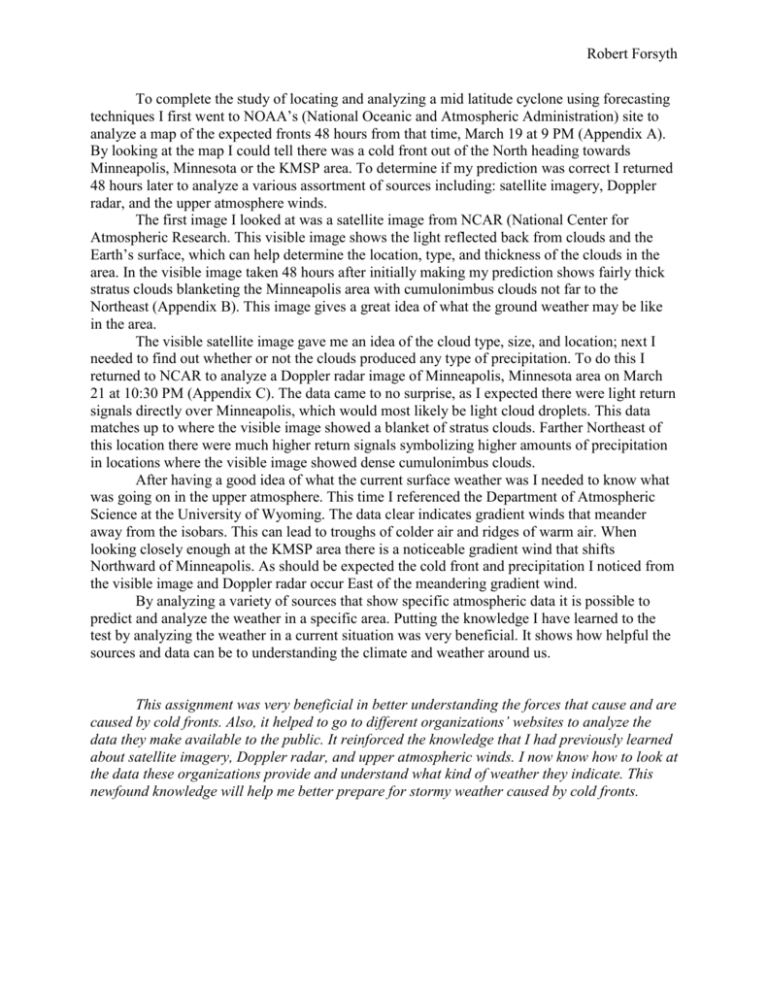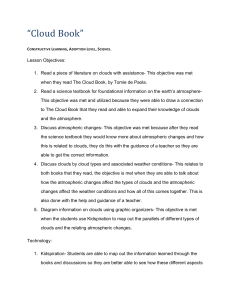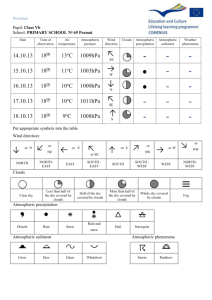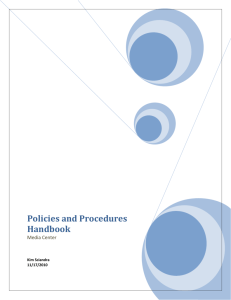File - Robert Forsyth ePortfolio
advertisement

Robert Forsyth To complete the study of locating and analyzing a mid latitude cyclone using forecasting techniques I first went to NOAA’s (National Oceanic and Atmospheric Administration) site to analyze a map of the expected fronts 48 hours from that time, March 19 at 9 PM (Appendix A). By looking at the map I could tell there was a cold front out of the North heading towards Minneapolis, Minnesota or the KMSP area. To determine if my prediction was correct I returned 48 hours later to analyze a various assortment of sources including: satellite imagery, Doppler radar, and the upper atmosphere winds. The first image I looked at was a satellite image from NCAR (National Center for Atmospheric Research. This visible image shows the light reflected back from clouds and the Earth’s surface, which can help determine the location, type, and thickness of the clouds in the area. In the visible image taken 48 hours after initially making my prediction shows fairly thick stratus clouds blanketing the Minneapolis area with cumulonimbus clouds not far to the Northeast (Appendix B). This image gives a great idea of what the ground weather may be like in the area. The visible satellite image gave me an idea of the cloud type, size, and location; next I needed to find out whether or not the clouds produced any type of precipitation. To do this I returned to NCAR to analyze a Doppler radar image of Minneapolis, Minnesota area on March 21 at 10:30 PM (Appendix C). The data came to no surprise, as I expected there were light return signals directly over Minneapolis, which would most likely be light cloud droplets. This data matches up to where the visible image showed a blanket of stratus clouds. Farther Northeast of this location there were much higher return signals symbolizing higher amounts of precipitation in locations where the visible image showed dense cumulonimbus clouds. After having a good idea of what the current surface weather was I needed to know what was going on in the upper atmosphere. This time I referenced the Department of Atmospheric Science at the University of Wyoming. The data clear indicates gradient winds that meander away from the isobars. This can lead to troughs of colder air and ridges of warm air. When looking closely enough at the KMSP area there is a noticeable gradient wind that shifts Northward of Minneapolis. As should be expected the cold front and precipitation I noticed from the visible image and Doppler radar occur East of the meandering gradient wind. By analyzing a variety of sources that show specific atmospheric data it is possible to predict and analyze the weather in a specific area. Putting the knowledge I have learned to the test by analyzing the weather in a current situation was very beneficial. It shows how helpful the sources and data can be to understanding the climate and weather around us. This assignment was very beneficial in better understanding the forces that cause and are caused by cold fronts. Also, it helped to go to different organizations’ websites to analyze the data they make available to the public. It reinforced the knowledge that I had previously learned about satellite imagery, Doppler radar, and upper atmospheric winds. I now know how to look at the data these organizations provide and understand what kind of weather they indicate. This newfound knowledge will help me better prepare for stormy weather caused by cold fronts. Robert Forsyth Appendix A Robert Forsyth Appendix B Robert Forsyth Appendix C Robert Forsyth Appendix D







